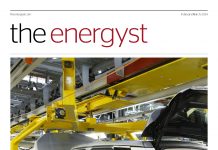 One approach to reducing water chiller energy consumption is to design the cooling system so that a higher outlet water temperature (CHW) from the chillers can be tolerated while maintaining a sufficient cooling effort. In this way, chillers consume less energy by not having to work as hard, and the number of free cooling hours can be increased.
One approach to reducing water chiller energy consumption is to design the cooling system so that a higher outlet water temperature (CHW) from the chillers can be tolerated while maintaining a sufficient cooling effort. In this way, chillers consume less energy by not having to work as hard, and the number of free cooling hours can be increased.
A new White Paper from Schneider Electric outlines the various strategies and techniques that can be deployed to permit satisfactory cooling at higher temperatures, while discussing the trade-offs that must be considered at each stage, comparing the overall effect of such strategies on two data centres operating in vastly different climates.
Among the trade-offs discussed are the need to install more air-handling units inside the IT space to offset the higher water-coolant temperatures, in addition to the need for redesigned equipment such as coils, to provide adequate cooling efforts when CHW (chilled water temperature) exceeds 20°C.
The paper also advises the addition of adiabatic, or evaporative, cooling to further improve heat rejection efficiency. Each approach requires an additional capital investment but results in lower long-term operating expenses due to the improved energy efficiency. The white paper details two real-world examples in differing climates; the first in a temperate region (Frankfurt, Germany); and the second in a tropical monsoon climate (Miami, Florida). In each case, data was collected to assess the energy savings that were accrued by deploying higher CHW temperatures at various increments, while comparing the effect of deploying additional adiabatic cooling.
The study found that an increased capital expenditure of 13% in both cases resulted in energy savings of between 41% and 64%, with improvements in TCO between 12% and 16% over a three-year period. Another inherent benefit of reducing the amount of energy expended on cooling is the improvement in a data centre’s power usage effectiveness (PUE) rating. As this is calculated by dividing the total amount of power consumed by a data centre by the power consumed by its IT equipment alone, any reduction in energy expended on cooling will naturally reduce the PUE figure. The Schneider Electric study found that PUE for the two data centres examined was reduced by 14% in the case of Miami and 16% in the case of Frankfurt.
To download the white paper, click here



